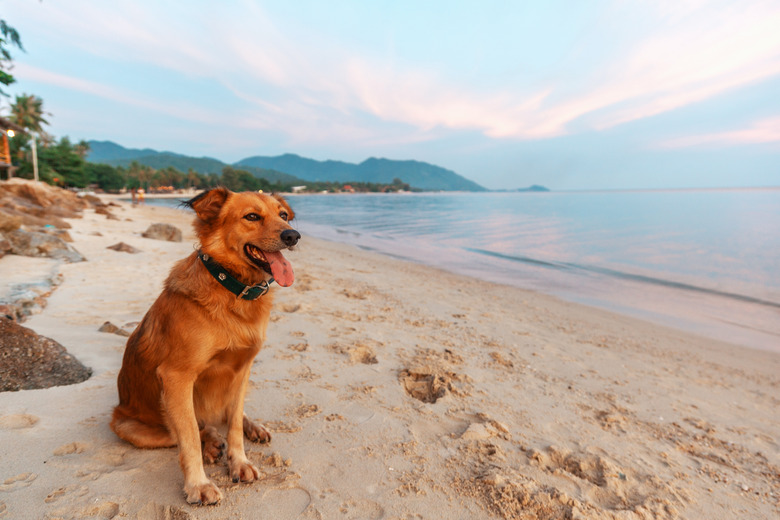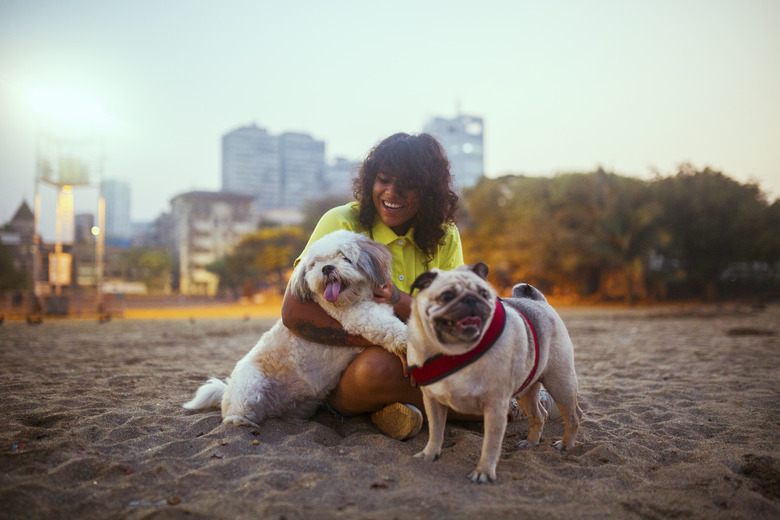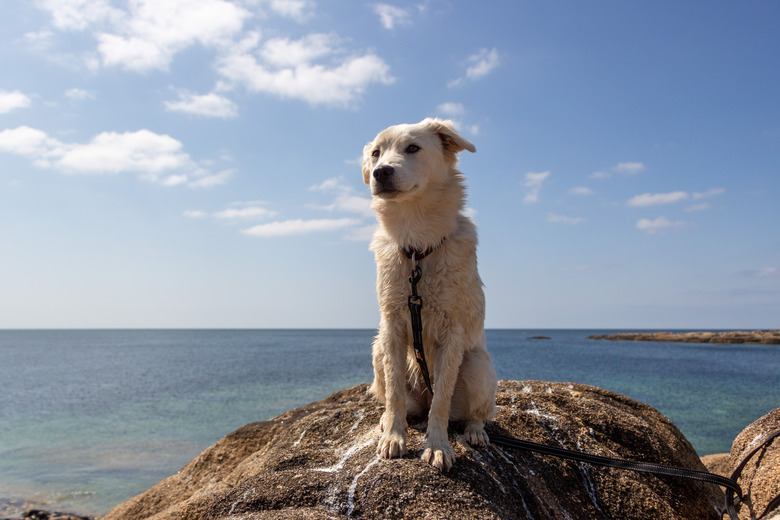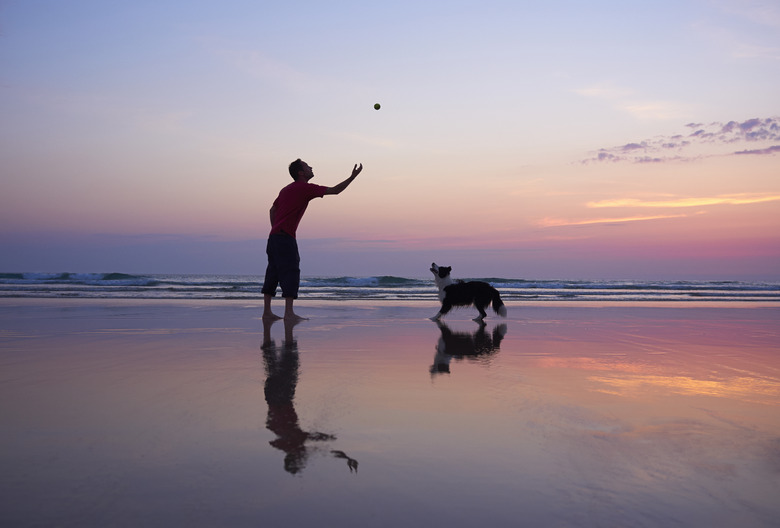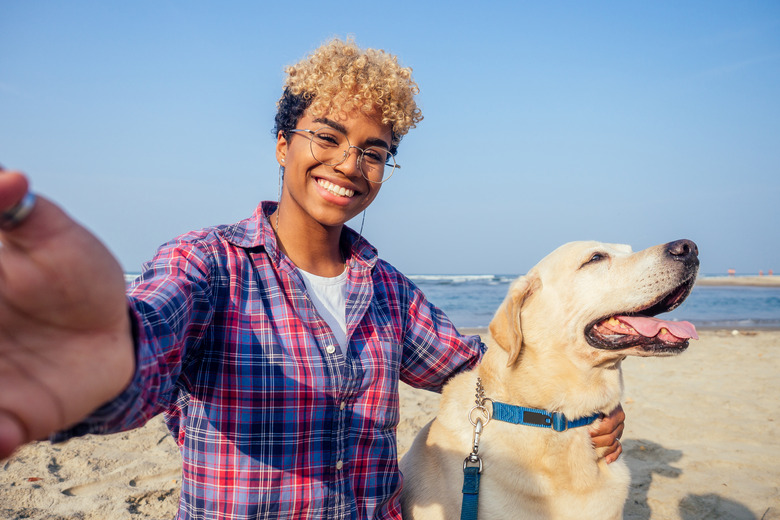6 Crucial Tips For Taking Your Dog To The Beach
Summer is here and it's the perfect time to hit the beach with your dog. Nothing is more fun than spending the day on the sand with your dog. If you and your dog are going to the beach, there are some training and safety considerations to keep in mind. Some basic tips can make the day fun and safe for you and your dog.
Find the right beach
Find the right beach
First and foremost, it's important to find the right beach to bring your dog to. Although a day at the beach with your dog is a lot of fun, not all beaches are dog-friendly. Before you head out with your dog, be sure to check regulations to confirm that you have found a dog-friendly beach.
Be sure to check if there are any regulations that affect dogs on the beach. For example, some beaches are only open to dogs in the off-season, (usually in the fall, winter, and early spring) but it prohibits dogs from being on the beach during the late spring and summer.
Other beaches only allow dogs during certain times of the day such as early mornings or have requirements for what length of leash you can have on your dog. Before heading to the beach, it's also a good idea to make sure there aren't any water safety advisories in effect for toxic algae or anything else that could be harmful to your dog.
Dog training at the beach
Dog training at the beach
If you plan to bring your dog along for a day at the beach, be prepared to spend the time focused on meeting your dog's enrichment and training needs. The beach can be a highly arousing place for many dogs, and the level of distraction can be overwhelming. As a result, even dogs who listen well to cues while at home or in the neighborhood may seem to forget everything when their paws touch the sand.
Use positive reinforcement techniques, and avoid getting frustrated. Pull out those treats and toys to provide your dog with a higher rate of reinforcement for good behavior — more than what you would use in less distracting areas. The beach is a great place to practice with distractions and a good opportunity to work on keeping your dog's focus on you.
Even if your dog is social, don't allow your dog to approach other dogs or beachgoers without explicit permission. If you bring your dog to the beach, it's your responsibility to supervise and entertain your dog with toys, games, training, and other forms of enrichment. Use the distracting environment to practice the basic skills that your dog knows well. Remember to reward your dog more often than you would in low distraction environments.
Supplies to bring to the beach for your dog
Supplies to bring to the beach for your dog
When heading to the beach, don't forget to bring all the supplies your pup will need for the day — including training supplies. For an outing at the beach, you'll want to bring a leash, (or multiple leashes if you intend to use a long line during part of the day) a harness, a portable water bowl, and lots of cool fresh water for your dog. It's also important to also bring lots of training treats that are pre-cut into small pieces, and easily washable toys for your dog to play with. If your dog will be spending time in or near the water, it's also a good idea to pack a lifejacket.
Should your dog be off-leash?
Should your dog be off-leash?
Having fun with your dog at the beach is the priority, but that doesn't mean your dog needs to be off-leash. Going to the beach is not the time to try to teach your dog an off-leash recall. Many beaches require dogs to be leashed. Other beaches allow for dogs to be off-leash as long as they are under complete verbal control of their owner. Verbal control means that your dog will listen to your cues every time, and not approach any other dogs, or people — unless given a cue explicitly to do so.
While training your dog to be reliable off-leash is a good goal, the excitement of water is often too much of a distraction for many dogs to be reliably safe off-leash. There is nothing wrong with keeping your dog leashed while at the beach. Dogs do not need to be off-leash to have a fun beach day.
An option for giving your dog more opportunities to run and play while at the beach (while keeping them safely connected to you) is to use a long line. These leashes come in a variety of lengths and can allow your dog the freedom to run, explore, sniff, and even swim. For your dog's safety, it's best to attach a long line to the back of a well-fitted back clip harness.
Respect the environment
Respect the environment
When enjoying a day at the beach with your dog, be courteous and respectful to the natural environment and its residents. Don't allow your dog to chase the wildlife, including sea birds. Watch for any signs or notifications that indicate nesting shorebirds or marine mammals, and keep your dog away from those areas. Harassing wildlife is not only rude and disrespectful it can have negative consequences for the ecosystem.
While you are at the beach always clean up after your dog. Don't bury your dog's poop in the sand as this can be harmful to local waterways when the tide rises. Instead, carry poop bags, pick up your dog's poop and bring it with you at the end of the day.
Beach safety considerations
Let your dog take breaks
A day at the beach can be a lot of fun, but it can also be dangerous for dogs. Dogs aren't very good at knowing their physical limits, so they need us to do that for them. Make sure your dog takes breaks while swimming, running, or playing. This can also be a great dog and puppy training opportunity.
Bring a dog-safe chew, or a stuffed hard rubber toy and give it to your dog while sitting on a blanket or in the shade. For added fun, you can freeze the stuffed toy ahead of time and keep it in a cooler until you're ready to give it to your dog. Providing your dog with something to chew while resting is helping to teach your dog that breaks can be rewarding. Chances are after a few minutes of chewing (which is naturally relaxing behavior for dogs) they will settle down for a nap.
Your dog could get sick from drinking too much salt water
Water intoxication is a condition that can occur when dogs drink too much water or take on too much water while playing. This can easily happen when your dog is swimming or taking on salt water or fresh water while retrieving the balls in the water. If your dog's gums get pale, is vomiting, or seems lethargic, immediately contact an emergency veterinarian.
Supervise your dog around the water
Always supervise your dog anytime they are in or near the water. Sneaker waves and strong currents can surprise and overtake even the strongest canine swimmers. A life jacket is great to have on your dog anytime they are in or near the water — especially for puppies or dogs who aren't strong swimmers. A life jacket is a must for brachial breeds whose flat faces make it difficult for them to swim safely.
Sand can be hot on dog's paws
Just as concrete can burn a dog's paws in the summer, hot sand can also be painful or even dangerous for dogs. If it's hot, using beach umbrellas or pup tents to create shade is important. Dogs can also accidentally ingest large amounts of sand from licking their paws or when it gets stuck to their toys. Try to limit how much repetitive fetch you play with and rinse toys like tennis balls if they become caked in the sand to prevent your dog from eating the sand.
In summary
In summary
The beach is a lot of fun for dogs, but there are safety considerations to keep in mind. When heading to the beach with your dog don't forget to bring everything you'll need to keep your dog safe, as well as treats and toys to use for play and reinforcement while training. With a little preparation to find the right beach and by respecting the local wildlife, you and your dog will be ready for a day of fun, sand, and water.
